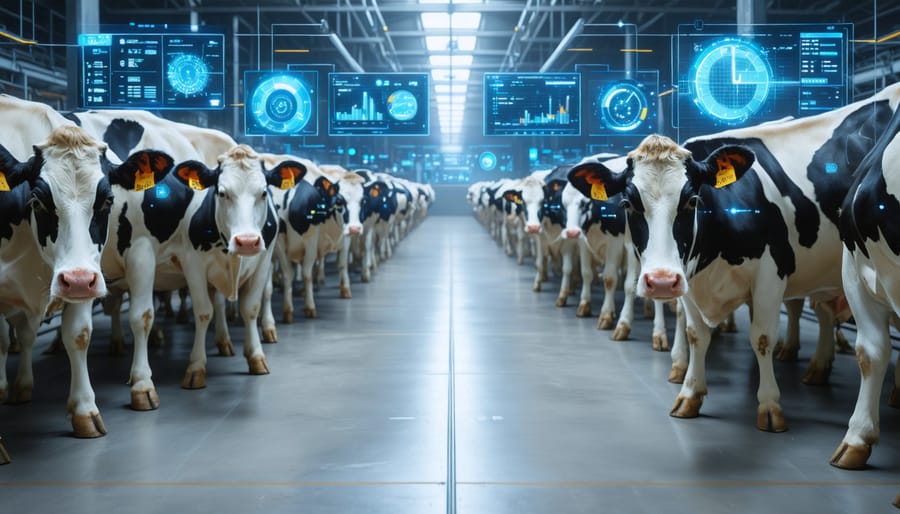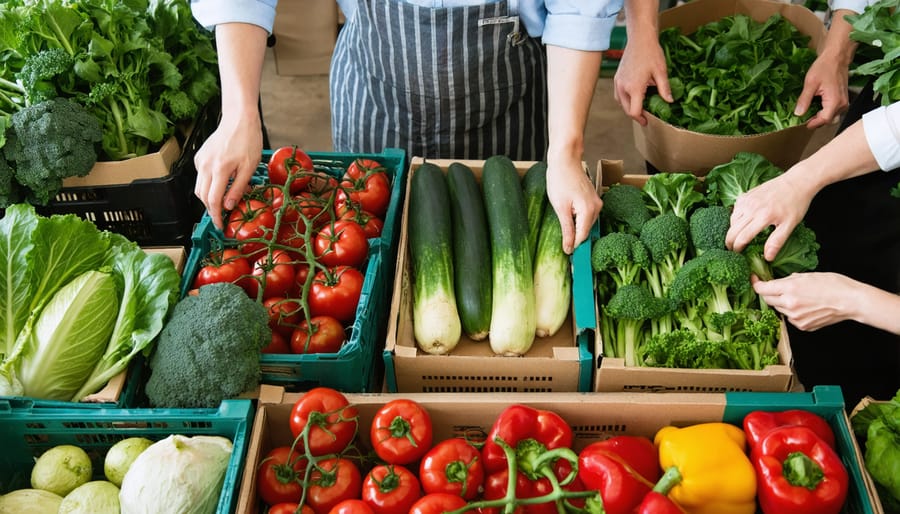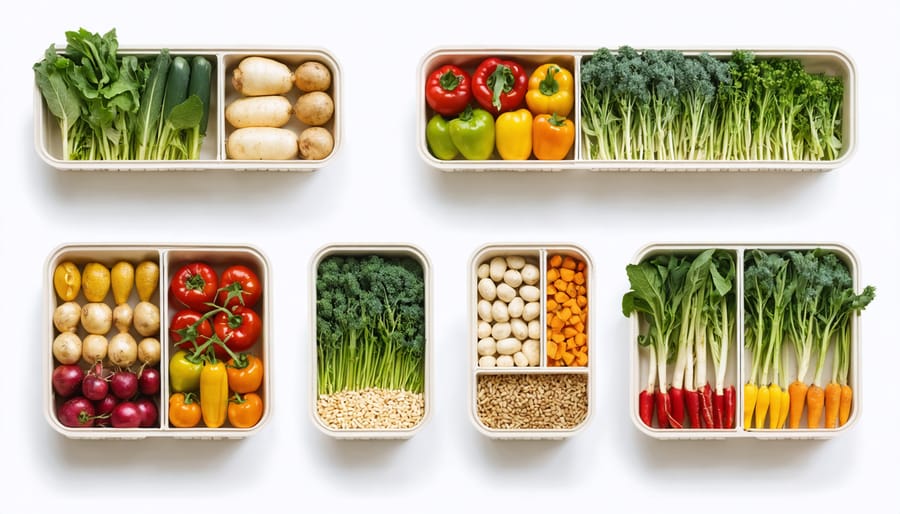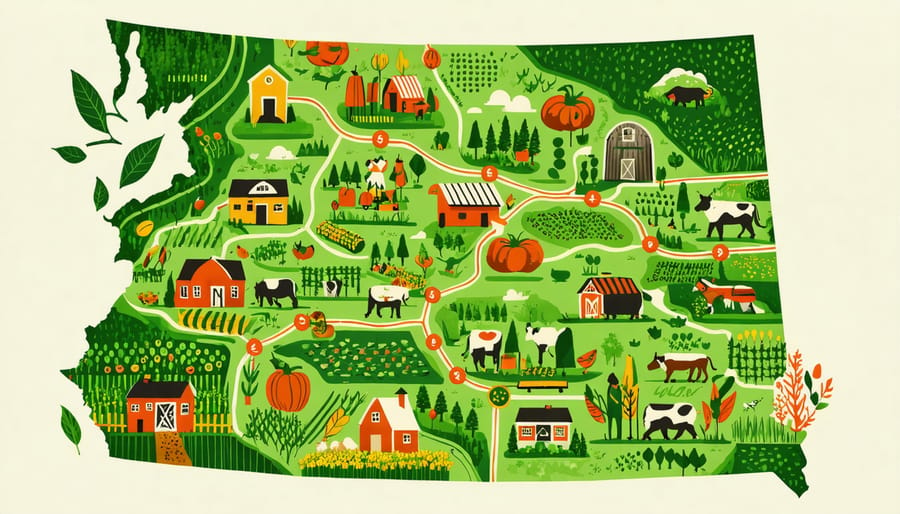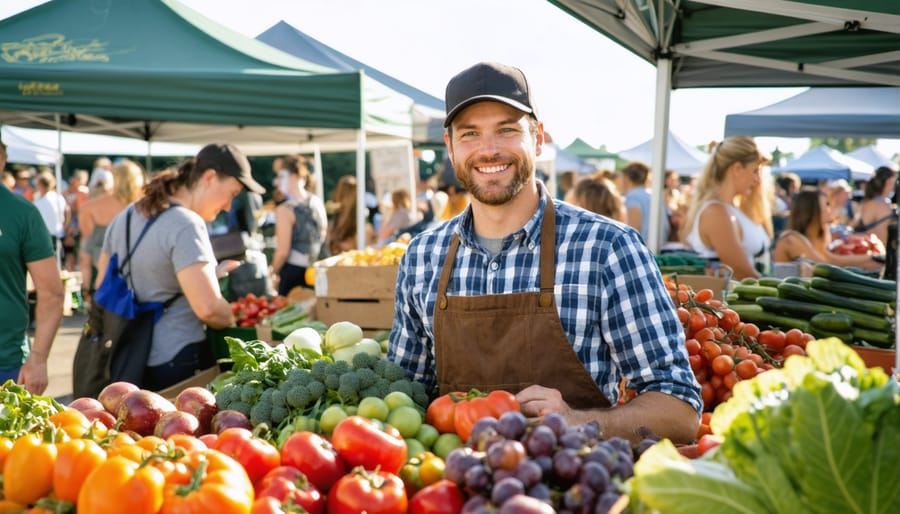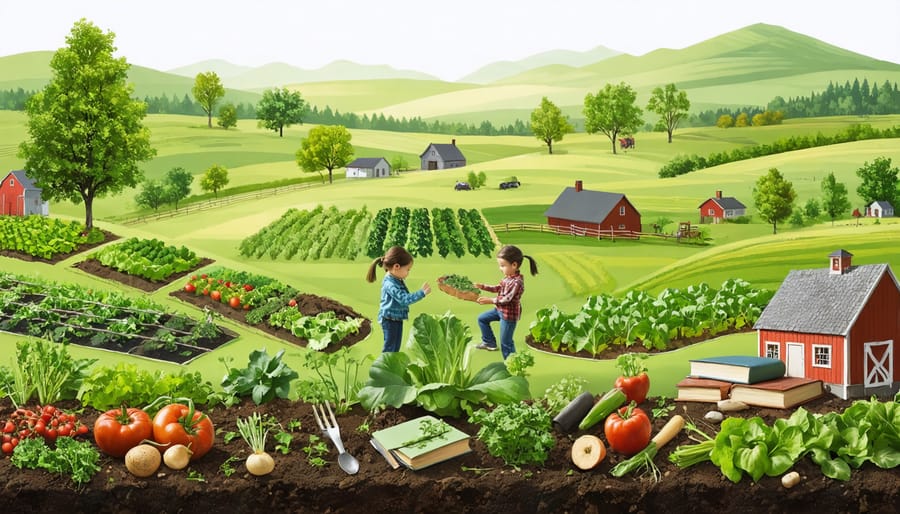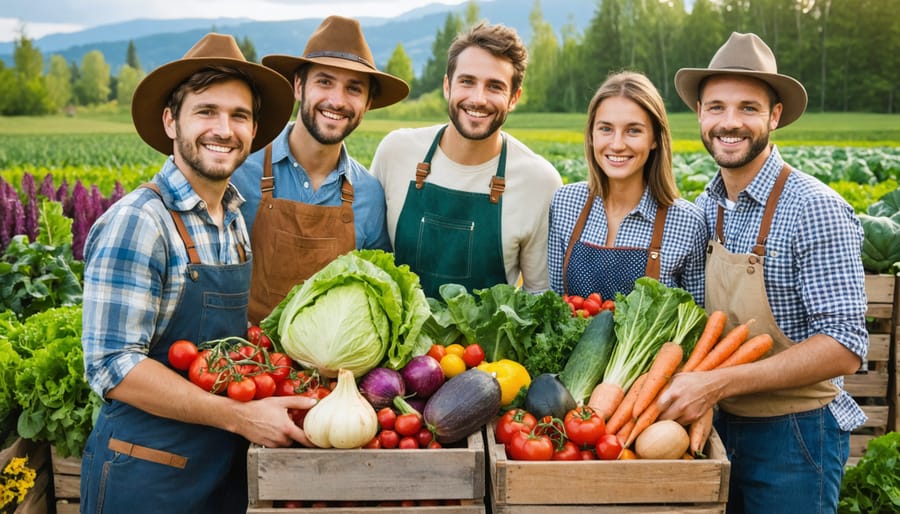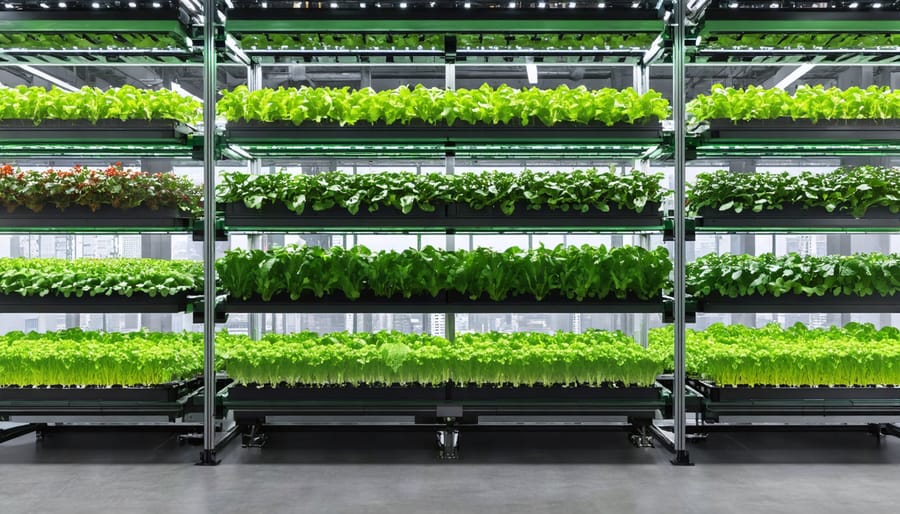Transforming empty urban spaces into thriving vertical farms revolutionizes year-round local food production across Canadian cities. Inside converted warehouses and purpose-built facilities throughout Alberta, innovative farmers stack growing systems 20 metres high, producing up to 30 times more food per square metre than traditional agriculture. These climate-controlled environments enable consistent harvests regardless of weather conditions, while reducing water usage by 95% compared to conventional farming methods.
Local restaurants, markets, and communities now access fresh produce within hours of harvest, not days or weeks. This agricultural revolution addresses both food security and sustainability, creating resilient local food networks that strengthen urban-rural connections. For Canadian farmers and entrepreneurs, vertical farming represents a practical solution to our unique climate challenges while opening new opportunities in the growing sustainable agriculture sector.
The future of farming isn’t just spreading out – it’s growing up.
The Rise of Vertical Farming in Canadian Cities
Technology Meets Traditional Agriculture
Modern vertical farms leverage innovative farming technologies that seamlessly blend traditional agricultural knowledge with cutting-edge solutions. LED growing lights now mimic natural sunlight patterns, while automated hydroponic systems deliver precise nutrient doses to each plant. Here in Alberta, farmers are embracing smart sensors that monitor everything from humidity to CO2 levels, ensuring optimal growing conditions year-round.
Climate control systems maintain perfect temperatures even during our harsh winters, while automated vertical rack systems maximize space efficiency. Many local operations use artificial intelligence to predict crop yields and adjust growing parameters in real-time. These systems typically reduce water usage by 95% compared to traditional farming methods.
What’s particularly exciting for our community is how these technologies work together through integrated management platforms. Farmers can monitor and adjust their entire operation from a smartphone, making it possible to maintain consistent crop quality while reducing labour costs. This technological integration has helped several Alberta-based vertical farms achieve production rates of up to 350 times more produce per square metre than conventional farming methods.
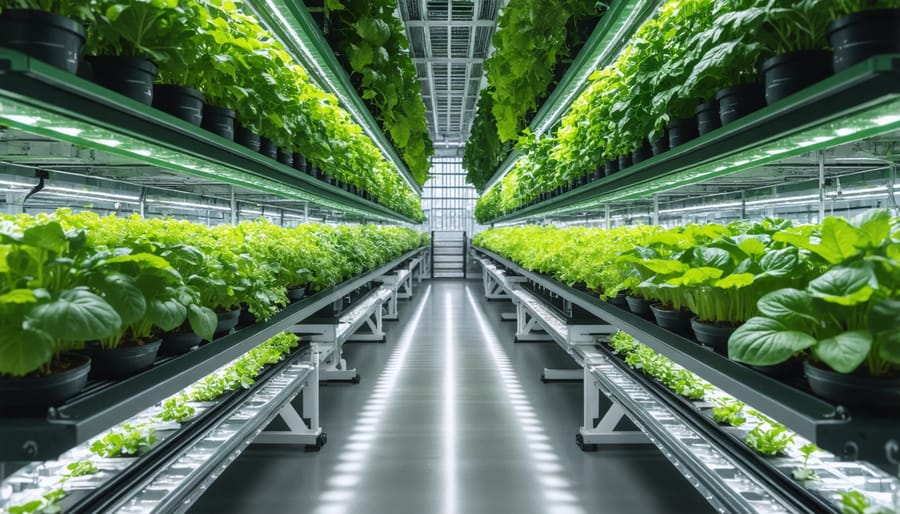
Space Efficiency in Urban Settings
In dense urban environments like Calgary and Edmonton, where real estate comes at a premium, vertical farms offer an ingenious solution to space constraints. These innovative structures can produce the same yield as a traditional farm while using just 10% of the land area. A typical 10-storey vertical farm can generate the equivalent output of 100 acres of conventional farmland.
Canadian urban farmers are maximizing every square metre through strategic vertical stacking of growing systems. Most operations utilize hydroponic or aeroponic methods, allowing crops to be grown in towers that can reach up to 30 metres high. These systems typically achieve 95% less water usage compared to traditional farming methods.
Here in Alberta, we’re seeing abandoned warehouses and unused office spaces transformed into productive growing environments. For example, the Edmonton Tower Farm project converted a former storage facility into a vertical farm that now produces over 45,000 kilograms of leafy greens annually. This approach not only maximizes urban space but also brings food production closer to consumers, reducing transportation needs and supporting local food security.
By thinking upward instead of outward, our communities are turning space limitations into opportunities for agricultural innovation.
Building Successful Farm-to-Table Networks

Direct-to-Restaurant Partnerships
Several Canadian vertical farms have successfully established direct partnerships with local restaurants, creating sustainable and profitable relationships that benefit both parties. The Growcer in Ottawa has partnered with multiple fine-dining establishments, providing fresh microgreens and specialty herbs year-round. Their partnership with Chef Marc Henderson of The Urban Peasant resulted in a 30% reduction in ingredient costs while ensuring consistent quality throughout the winter months.
In Calgary, Vertical Harvest Farms collaborates with five downtown restaurants, delivering harvested produce within hours of picking. Restaurant owner Sarah Chen of Terra Local notes, “Having direct access to fresh, locally grown produce has transformed our menu planning. We can now offer specialty items like wasabi arugula and purple basil consistently throughout the year.”
Vancouver’s Living Lettuce Farms demonstrates another successful model, operating a subscription service for restaurants. They currently supply 12 establishments with custom-grown greens and herbs, planned in coordination with each restaurant’s menu cycles. This system allows chefs to request specific varieties and quantities, reducing food waste and ensuring premium quality.
These partnerships often include collaborative elements beyond simple supply arrangements. Many farms offer restaurant staff tours and training sessions, while some chefs participate in crop selection and testing new varieties. This close collaboration helps both parties optimize their operations and create unique dining experiences for customers.
Community Support Programs
Vertical farms across Canada are increasingly integrating community engagement strategies into their operations, creating meaningful connections with local residents. The Greenhouse Project in Edmonton stands out as a prime example, offering educational tours to school groups and hosting monthly workshops on sustainable farming practices. They’ve partnered with local food banks to donate fresh produce and created employment opportunities for newcomers to Canada.
In Calgary, Urban Crops Calgary has developed a successful apprenticeship program that trains local youth in vertical farming techniques. Their initiative has helped place over 50 graduates in agricultural positions throughout Alberta, while simultaneously providing fresh produce to nearby restaurants and markets.
The Growing Together initiative in Red Deer demonstrates how vertical farms can support Indigenous communities. Working with local First Nations groups, they’ve established a knowledge-sharing program that combines traditional agricultural wisdom with modern vertical farming techniques. The program provides fresh, culturally appropriate produce while creating sustainable employment opportunities.
These community programs often include:
– Weekly farmers’ markets featuring vertical farm produce
– Cooking demonstrations using harvested vegetables
– Workshops on small-scale vertical growing for home gardeners
– Partnerships with local schools for STEM education
– Job training programs for underserved communities
– Food security initiatives for low-income neighborhoods
The success of these programs shows how vertical farms can serve as both food production facilities and community hubs, fostering stronger connections between urban residents and their food sources while promoting sustainable agricultural practices.
Environmental Impact and Sustainability
Water Conservation Success Stories
Several Alberta-based vertical farms have achieved remarkable success in water conservation through innovative techniques. Pure Greens Calgary, for instance, reports using 95% less water compared to traditional farming methods through their closed-loop hydroponic system. Their approach recycles and purifies water continuously, saving approximately 20 million litres annually.
In Edmonton, Vertical Farms Alberta has implemented a fog-based irrigation system that reduces water consumption by 98%. By creating a fine mist that delivers water directly to plant roots, they’ve minimized evaporation and runoff while maximizing absorption. Their system uses sophisticated sensors to monitor moisture levels, ensuring optimal water distribution.
The GrowUp Farms in Red Deer showcases another success story, utilizing AI-controlled drip irrigation that has cut their water usage by 90%. Their system collects condensation from the facility’s climate control system and reintegrates it into their irrigation network, demonstrating how technology can maximize resource efficiency.
These achievements are particularly significant given Alberta’s periodic water scarcity challenges. Local vertical farm operator Sarah Thompson notes, “We’re proving that sustainable agriculture isn’t just possible in urban settings – it’s incredibly efficient. Our water conservation methods are setting new standards for agricultural sustainability in Canada.”
The success of these operations has inspired several new vertical farming projects across the province, with many incorporating similar water-saving technologies.
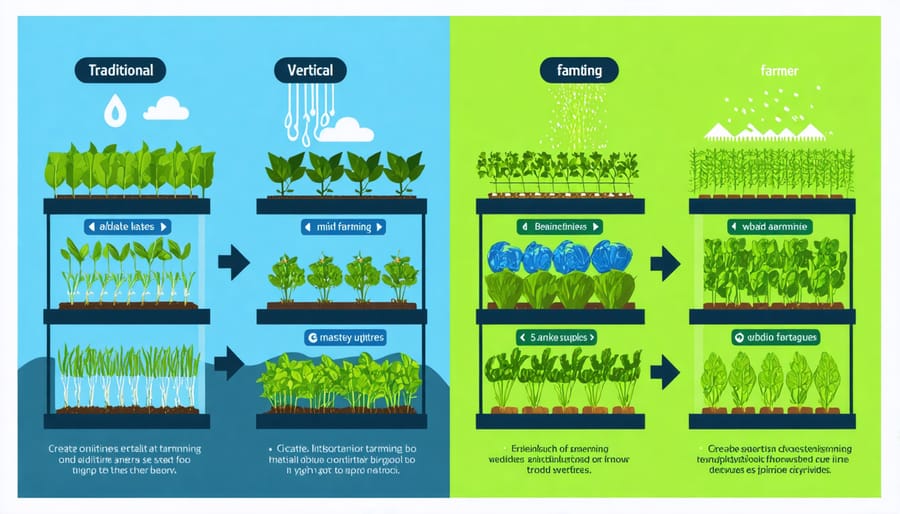
Energy Efficiency Solutions
Energy efficiency lies at the heart of successful vertical farming operations across Alberta and beyond. By implementing smart energy solutions, farms can significantly reduce operational costs while maintaining optimal growing conditions. LED lighting systems, specifically designed for plant growth, consume up to 70% less energy compared to traditional growing lights while delivering precise light spectrums for different crop needs.
Many Canadian vertical farms are now integrating renewable energy sources into their operations. Solar panels on rooftops and walls can offset significant portions of energy consumption, particularly during peak summer months. In Edmonton, the GrowYEG facility demonstrates how geothermal heating systems can maintain consistent temperatures year-round, reducing heating costs by approximately 40% compared to conventional HVAC systems.
Energy recovery ventilation (ERV) systems are becoming standard in modern vertical farms, recycling up to 85% of heating and cooling energy. These systems are particularly valuable in our climate, where temperature control is crucial yet energy-intensive. Smart monitoring systems track energy usage in real-time, allowing farmers to optimize consumption patterns and identify potential savings.
Water-energy nexus solutions, such as closed-loop irrigation systems, minimize both water and energy waste. These systems, when combined with proper insulation and thermal management strategies, create a highly efficient growing environment that maximizes crop yield while minimizing resource consumption. Calgary’s Urban Crops Initiative reports annual energy savings of $45,000 through these integrated efficiency measures.
Getting Started with Vertical Farming
Essential Infrastructure Requirements
Setting up an urban vertical farm requires careful consideration of several key infrastructure elements. The foundation starts with a structurally sound building that can support the weight of growing systems, water tanks, and equipment. For most operations in Alberta, a minimum ceiling height of 4 metres is recommended to accommodate vertical growing racks and proper air circulation.
Climate control systems are essential for maintaining optimal growing conditions year-round. This includes HVAC systems capable of managing temperatures between 18-24°C and humidity levels of 50-70%. In our Canadian climate, proper insulation is crucial for energy efficiency, particularly during winter months.
Lighting infrastructure forms the backbone of indoor growing. LED growing lights are the industry standard, offering energy efficiency and customizable light spectrums. A typical setup requires 14-16 hours of daily light exposure, necessitating robust electrical systems rated for continuous operation.
Water management systems must include primary and backup water supplies, filtration systems, and drainage solutions. Most successful operations implement hydroponic or aeroponic systems that use 90% less water than traditional farming methods. Nutrient delivery systems should be automated for consistency and efficiency.
Vertical racking systems need to be both sturdy and accessible. Mobile racking systems are popular among Canadian growers, allowing for maximum space utilization while maintaining worker access. Standard configurations typically accommodate 4-6 growing levels per rack.
Don’t overlook the importance of a reliable backup power system. Given our climate, power interruptions could be catastrophic for crop production. Installing emergency generators and implementing monitoring systems ensures continuous operation during outages, protecting your investment and harvest schedule.
Crop Selection and Management
When selecting crops for your urban vertical farm, focus on high-value, quick-turning plants that thrive in controlled environments. Leafy greens like kale, spinach, and various lettuce varieties are excellent starter choices, typically reaching harvest in 30-45 days. Herbs such as basil, mint, and cilantro also perform exceptionally well and command premium prices in local markets.
Consider the unique advantages of your setup when planning your crop rotation. Most vertical systems excel with compact plants that don’t exceed 30 cm in height. Microgreens have become increasingly popular among Alberta’s urban farmers, offering quick returns with harvest times of just 7-14 days and requiring minimal growing space.
Temperature management is crucial for success. Maintain your growing environment between 18-24°C for most crops, with humidity levels around 65%. Modern LED growing lights should run 14-16 hours daily, providing the specific light spectrum your crops need while managing energy costs effectively.
Nutrient solution management requires regular monitoring. Test pH levels daily, aiming to maintain them between 5.8-6.2 for most crops. Check EC (electrical conductivity) levels weekly to ensure proper nutrient concentrations. Many successful Canadian vertical farmers use automated monitoring systems to maintain optimal growing conditions.
Disease prevention is easier in controlled environments, but still requires vigilance. Implement a strict sanitation protocol, including regular cleaning of growing surfaces and equipment. Maintain good air circulation with fans, and inspect plants daily for any signs of stress or pest issues.
Remember to stagger your plantings to ensure consistent harvest volumes throughout the year. This approach helps maintain steady supply for your customers while maximizing space utilization in your facility.
Urban vertical farming represents a promising path forward for Canadian agriculture, offering innovative solutions to our unique challenges of climate, space utilization, and food security. As we’ve seen through successful implementations across Alberta and other provinces, these systems can effectively complement traditional farming methods while creating new opportunities for sustainable food production.
The future outlook for vertical farming in Canada is particularly bright, with technological advancements continuing to improve efficiency and reduce operational costs. Industry experts project significant growth in the sector over the next decade, driven by increasing consumer demand for locally grown produce and the need for climate-resilient farming solutions.
For Canadian farmers considering vertical farming integration, the key takeaway is clear: while initial investment may be substantial, the potential benefits – including year-round production, reduced water usage, and consistent crop yields – make it a viable option for diversifying agricultural operations. As our communities continue to embrace local food systems, vertical farming stands ready to play a crucial role in strengthening our agricultural sector and ensuring food security for future generations.
Remember, success in vertical farming comes through careful planning, community engagement, and a commitment to sustainable practices – values that have long defined Canadian agriculture.


